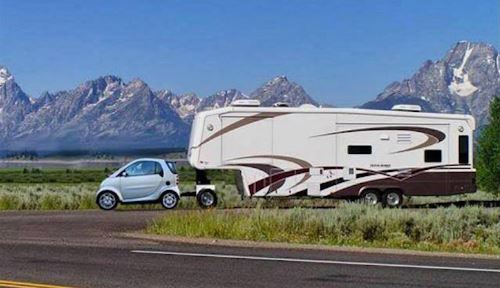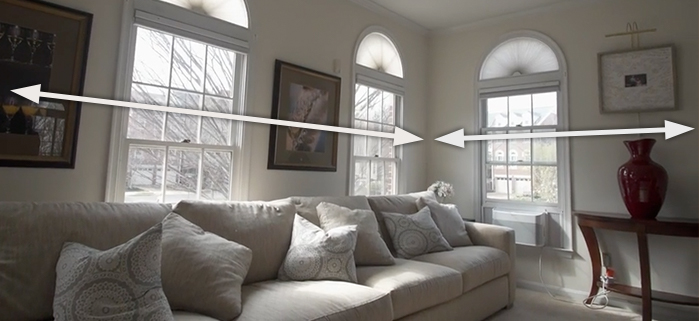You have more than likely heard the saying, “bigger is better.” And while it applies to some things, it doesn’t apply to everything. Sure, if you know you are going to be towing things often this might apply as you are better off to get something with a higher towing capacity and not need it than you are to get something smaller and be stuck in a situation that you need more towing capacity. Or maybe you are unsure if you want to have 1 or 3 children, you might be better off looking at a 4-5 bedroom house knowing that if you don’t fill the rooms they can be converted to an office or play room but if you have more kids than rooms then it’s going to get crowded in there. It’s one of those marketing mindsets that gets engraved early, “plan for what is to come not just for today.” Maybe these big cities wouldnt have 3 lane highways and ridiculous rush hours if they took that advice. But that’s the end of my rant because none of that applies to selecting the proper sized Air Conditioner.
You see, those examples are closely linked to variables that can change (weight being towed, number of children expected, anticipated population size of a city, etc.) and none of them are defined. Your home has “X” amount of square footage with the catch that you maybe add on to it. Majority of people do not make additions to their homes that require conditioned air so let’s count that situation out for the time being. Since your home has a defined amount of space, you have no need to plan for anything other than what it needs today because that same amount of space will be what is there the next day, and the day after that for the life of the home. But why isn’t bigger better? – You ask. Well let’s talk about that.

One of the biggest myths: A bigger unit will cool off the home faster SO ITS BETTER. While you could try to connect the thought that a large industrial fan will certainly cool you off faster than a residential one, you would be overlooking the two main jobs of your air conditioner; lowering temperature and controlling humidity. A fan doesn’t do anything to actually drop the temperature of the air it’s circulating but instead just changes the relative temperature of your skin by creating a “wind chill” effect. Placing an oversized unit into a space will certainly cool it off faster but that’s not the part that is incorrect here. Cooling off the home faster means shorter run times which then means you are limiting the dehumidification period which is not what you want if you care about comfort. As air moves over the coil, it condenses and gets pulled out of the system. So while the large system can muscle through and provide cold air fast, it will be skipping over arguably the more important job which is dehumidfying the home properly. Also, depending on how your home is set up and where your thermostat is located at, you may provide cool air to rooms near the thermostat but that room furthest down stream from the A/C might not cool off. This is one of the potential causes of hot and stuffy rooms or levels. Add this effect alongside duct leakage and it gets even worse.
A properly sized system is likely to turn on and off, or cycle, 2-3 times per hour during peak temperature highs and lows. That will allow for optimal dehumidification of the air that is being conditioned inside your home. If your system is cycling every ten minutes or less then you more than likely have an oversized unit that will not properly dehumidify the home. That in turn leads to increased utility bills since the system is turning on and off more often and, double whammy, you are now paying more for less comfortable air than what you should be experiencing.

An undersized unit will act a little different. Instead of turning on frequently, it’ll just stay on to reach the thermostat temperature you have set. This, again, means higher utility bills that you wouldn’t have otherwise but it also means increased wear on the system which will shorten its life. You might also notice that the system struggles to lower the indoor temperature and maintain it, especially if you are trying to achieve 72 degrees on the hottest summer day. The problem here is while it might seem obvious that you have an undersized unit based on run time, temperature control, and utility bills, these are also signs that you may have a dirty filter/system or undercharged system.
So how do you calculate the proper sized unit for your home? It involves a little math. An air conditioner’s cooling capacity is officially in BTU’s, or British Thermal Units, but you will more commonly hear the terms “tons.” One ton is the same as 12,000 BTU’s. So now you take that 12,000 and multiply it by the tons on your system or one that you are considering; a 3 ton would be 36,000 BTU’s and a 5 ton would be 60,000 BTU’s.

How many BTU’s do you need? Well it’s easier than it sounds to at least get close. Take the square footage of your home which should be included in the paperwork for sale of your home. If not, go room by room and measure the length and width of each. Add it all up and you have your total square footage. 1 square foot is equal to about 25 BTU’s. Simply multiply that number by 25 to get your total number of BTU’s.
For example: A 2000 square foot home would need a unit with roughly 50,000 BTU’s. Divide that 50,000 by 12,000 and you find that you need 4.1667 tons or a 4 ton unit.
- 2,000 square foot x 25 = 50,000 BTU’s
- 50,000 BTU’s / 12,000 = 4.1667 tons
Now, this is just a quick way to ballpark what you need and should not be the only calculation. There are many other factors that can effect this equation and need to be accounted for. This is where a professional becomes your best friend because they have the training and tools to appropriately test your home.
- Does your house stay relatively shaded or exposed to the sun? If most of it is shaded, then you could reduce your needs. If a lot of sun makes it through, then you’ll need to increase your system’s needs. This can be effected by how your house sits in relation to the sunrise and sunset, the trees (or lack thereof) surrounding you, and more.
- How large is your family? Since more people means more breathing and body heat, you have to make up for the difference. I’m sure most of you have experienced large family gatherings or parties where the temperature needs to be turned down more than normal because the crowd is making it too warm inside.
- How many windows are in your home? Some homes are lined with walls of windows which is great to enjoy the beautiful view but it also enhances the “green house effect” inside your home. Maybe you have higher quality windows to block out some of the rays or air infiltration.
- How does your home insulation look? A quality insulation job goes a long way to helping your A/C not work so hard. Some exterior walls are built with 2×4’s so the insulation density isn’t as thick compared to an exterior wall that used 2×6’s. Attics have a lot of room for insulation and some just use batt insulation while others opt for the blown in or spray insulation which will result in different heat losses.
- How many can lights and exterior wall outlets/switches do you have? This depends on the type of can light fixture or switch you are using because people have caught on and are providing insulated alternatives to combat the leakage and energy loss. This might not seem like a big deal but the leakage can compound quickly.
- How leaky are your ducts? The DOE has studies out there that show typical ducts lose anywhere from 25-40% of their heating and cooling energy. First of all, that’s not good for you. Second of all, that’s not good for your system. Every bit of leakage drops the efficiency rating on your A/C so buying a high end, high efficiency unit and attaching it to leaky ductwork is going to have it performing like a mid range unit at best.
So, if money is just an object and you are ok with utility bills that are higher than they need to be, go ahead and purchase an oversized or undersized air conditioner. A bigger unit is going to not only cost you more upfront but it will continue to cost you each month while an undersized unit will run longer and wear out quick. If you are reading this and are anything like most of the people I know, money isn’t an object and you probably care to save as much as you can, where you can, and make the most of any investment. This isn’t a measure once, cut twice situation. These are big purchases so measure as many times as you need. Once your decision has been installed, there is no turning back without further investment. Do the math yourself and get a good idea of what your home needs. With the number of variables and possibilities that aren’t included in this write up, trust a local HVAC contractor to provide a second opinion. That is their job afterall. The more educated you are going into the discussion will definitely smooth out much of the conversation and set you on a path towards making the best decision.
